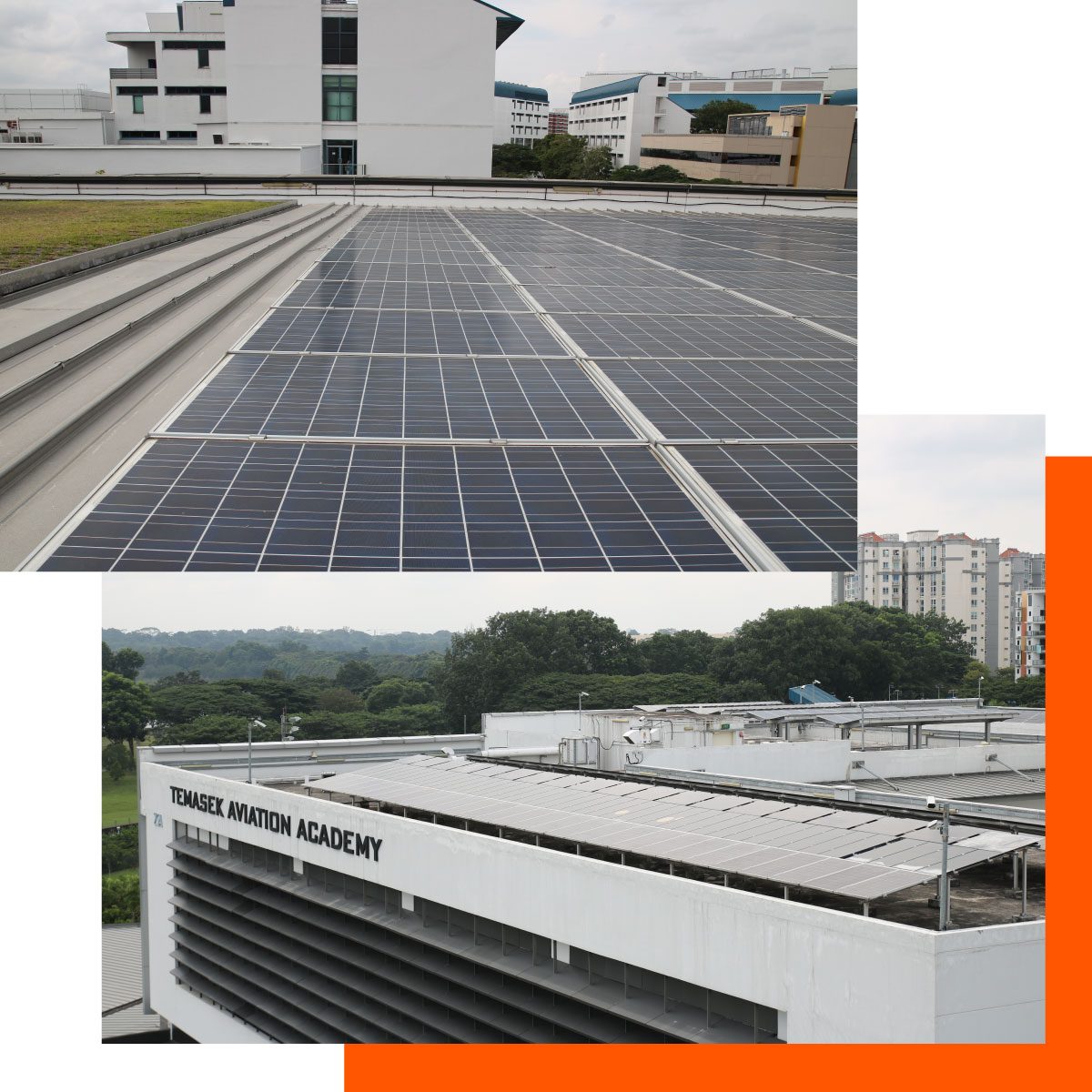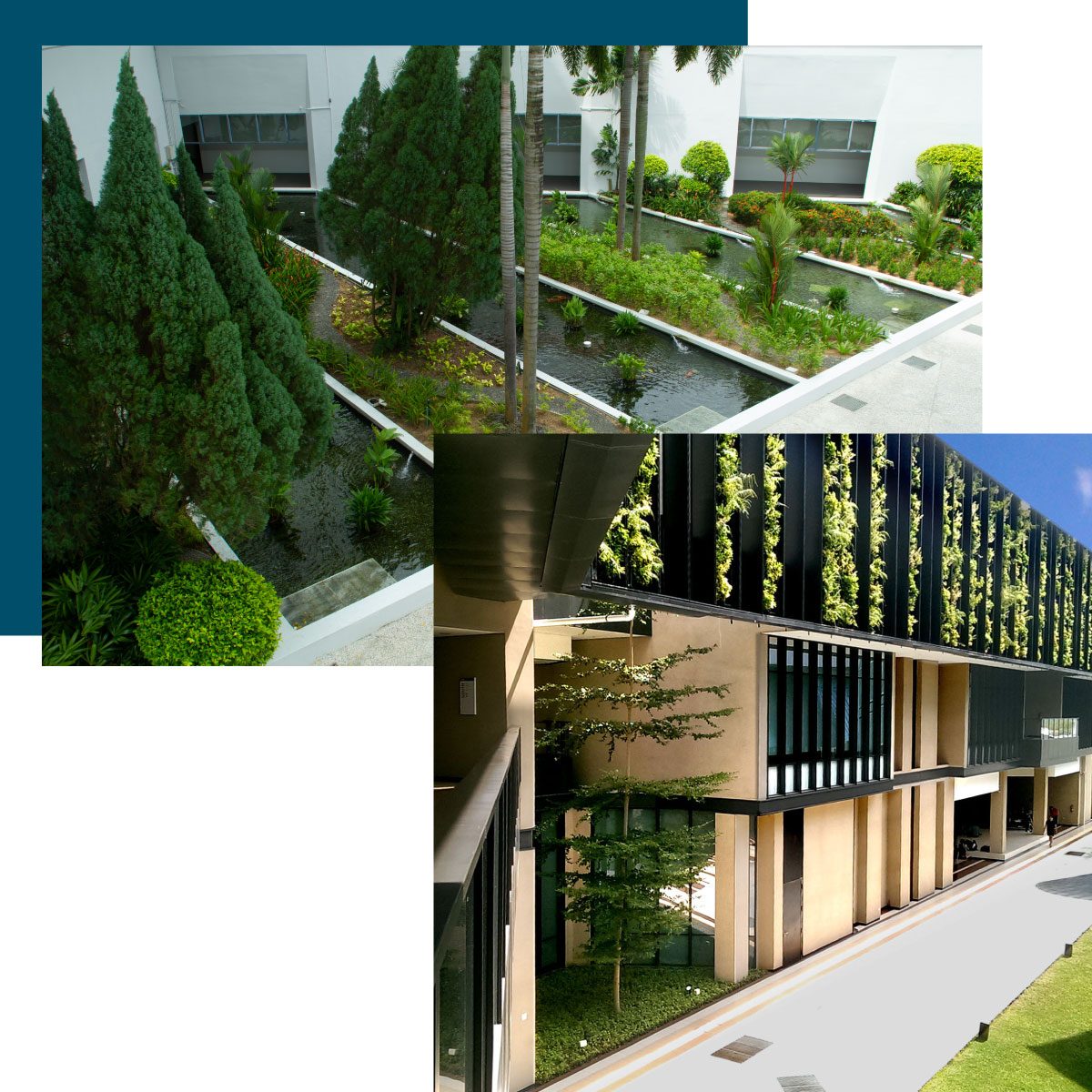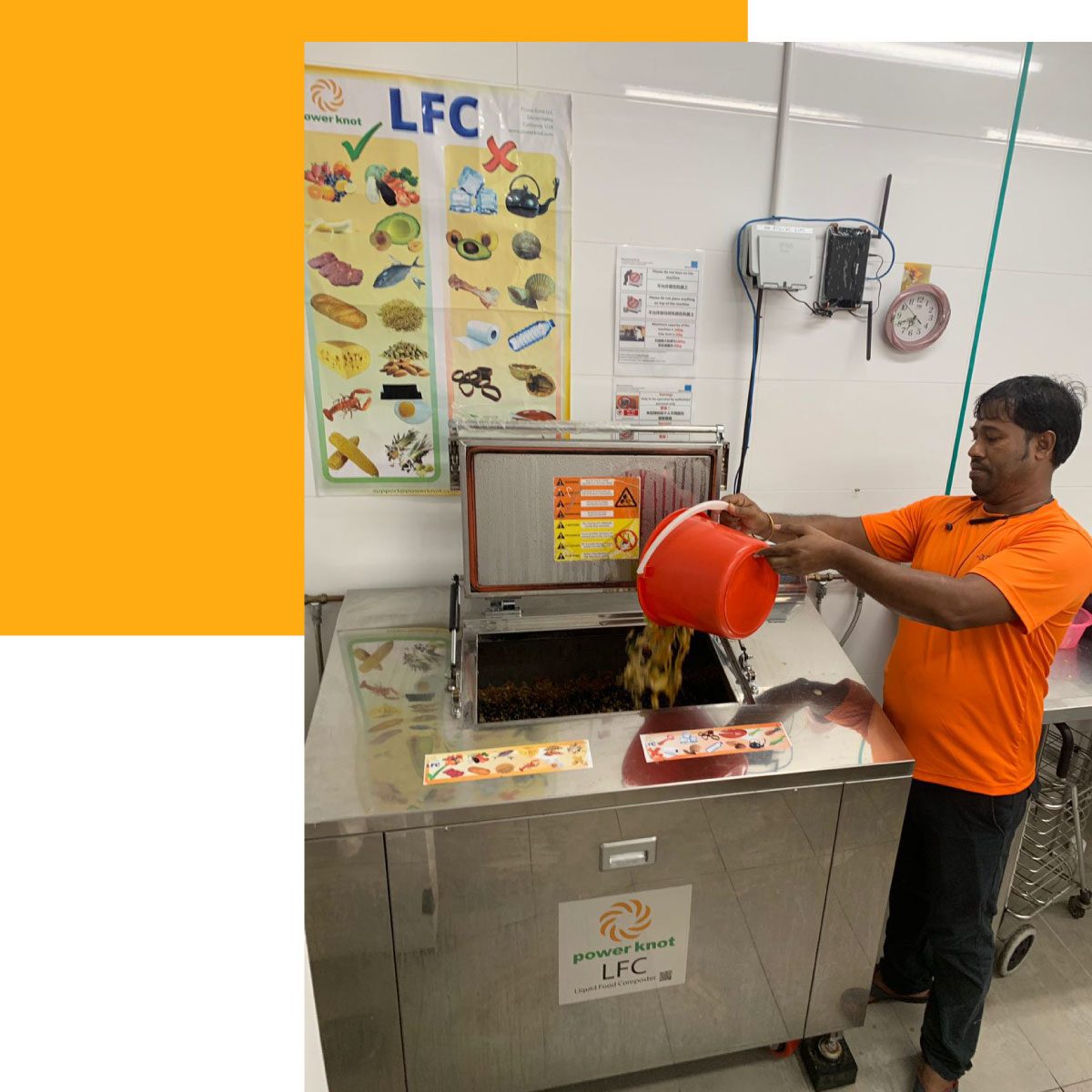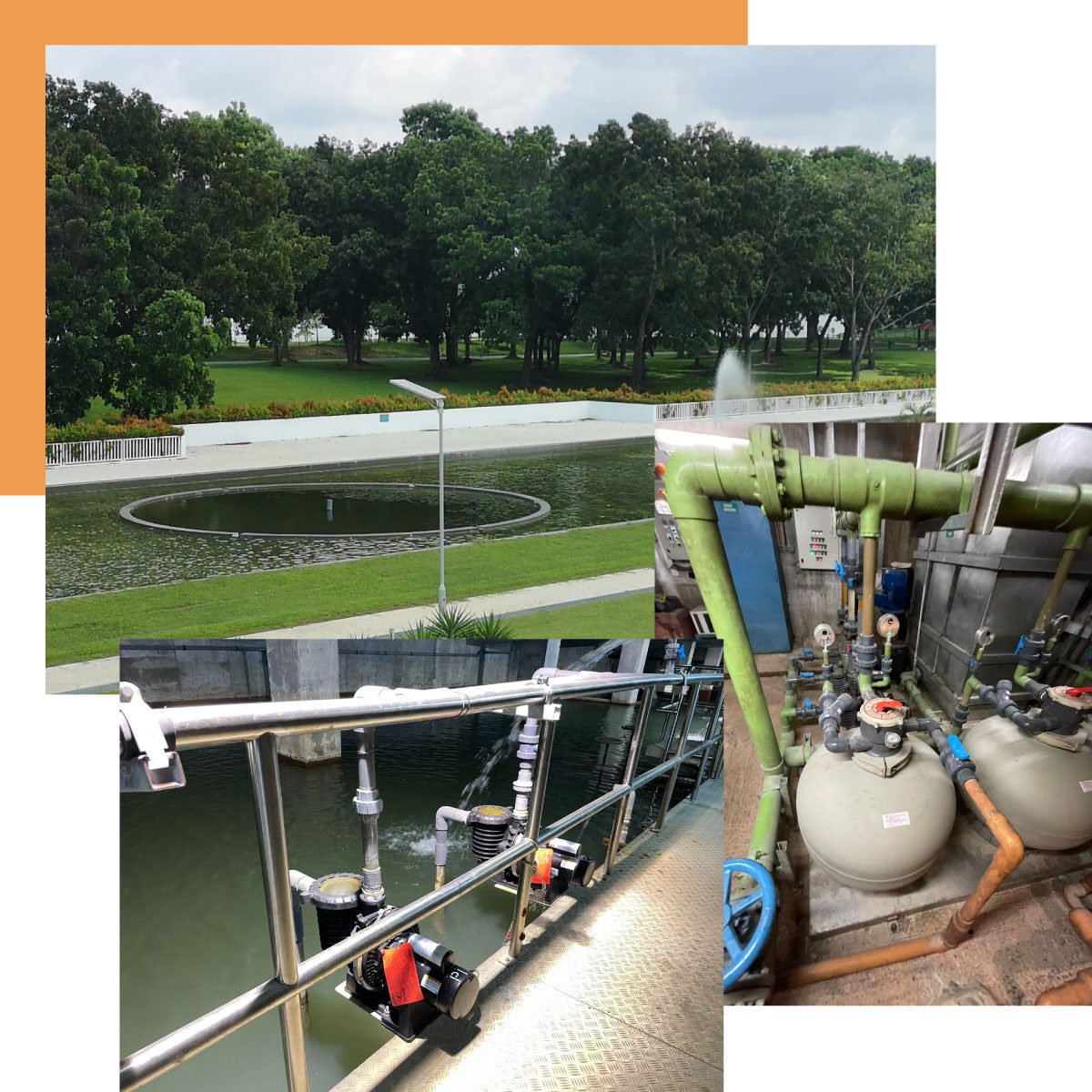
The water needed for irrigation on our green TP campus is harvested from rainwater. Unknown to most TP dwellers, there is a hidden network of drains, pipes, pumps, and water tanks that collect every drop of rainwater. This engineering marvel is located just beneath the surface of the Triangular Gardens. The system collects water that would normally enter the monsoon drains and uses it to irrigate the Triangular Garden planters as well as the lush trees in the carparks. This water conservation technology includes four 500m3 concrete water storage tanks which are used to provide the campus with 9,000m3 of irrigation water per year.
No rain? No problem! The system is designed to draw water from the monsoon drain that separates TP from Bedok Reservoir Park. This irrigation system was part of TP’s original architectural design and was completed in 1996.
The fountains at the end of the Triangular Garden also draw water from the same source.
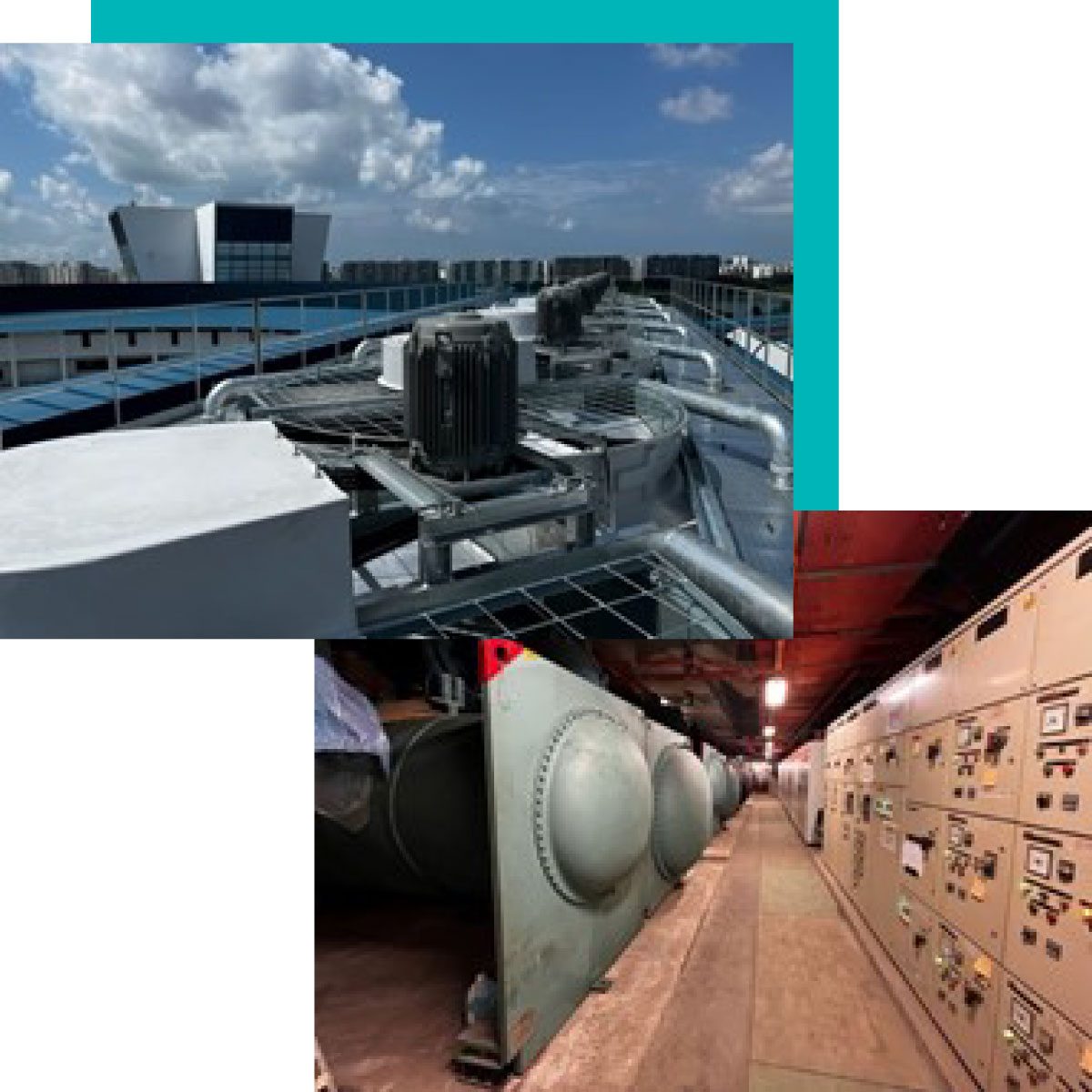
TP’s air conditioning system has undergone a major upgrading and the chiller plants have achieved 36% improvement as compared to the pre-upgrading efficiency. The five chillers now use low Global Warming Potential (GWP) refrigerant.
TP has switched from chemical to non-chemical water treatment for cooling towers. This initiative has achieved an annual savings of 6,686m3.
The replacement of the chillers in Block 9 Main Chiller Plant is a major energy efficiency upgrade that will lead to significant energy savings. The expected savings of 4,400,000 kWh per year is equivalent to the annual consumption of 1,000 households, which is a substantial amount. This means that the energy efficiency upgrades will not only lead to significant cost savings for TP but will also have a positive impact on the environment by reducing greenhouse gas emissions and other pollutants.
